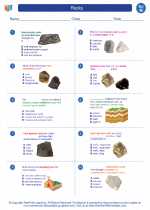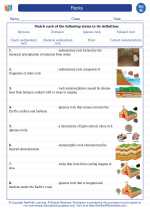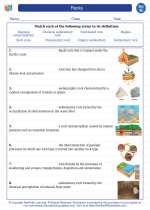Parasites
A parasite is an organism that lives on or in a host organism and derives its nourishment and protection from the host, often causing harm to the host in the process.
Types of Parasites
Parasites can be classified into three main types:
- Ectoparasites: These parasites live on the outer surface of the host's body, such as fleas, ticks, and lice.
- Endoparasites: These parasites live inside the host's body, such as tapeworms, roundworms, and protozoa.
- Parasitoids: These parasites lay their eggs inside the host, and the larvae consume the host from the inside out, eventually killing it. Examples include certain species of wasps and flies.
Life Cycle of Parasites
Parasites often have complex life cycles that involve multiple stages and may require different host organisms at different points in their development. The life cycle of a parasite can include stages such as egg, larvae, and adult, with some parasites requiring intermediate hosts before infecting their final host.
Effects of Parasitism
Parasites can have various effects on their hosts, including:
- Direct damage: Parasites can physically damage host tissues, leading to symptoms such as itching, inflammation, and organ dysfunction.
- Indirect effects: Parasites can weaken the host's immune system, making it more susceptible to other diseases.
- Behavioral manipulation: Some parasites can alter the behavior of their hosts to increase their own chances of survival and reproduction.
Preventing and Treating Parasitic Infections
Preventing parasitic infections often involves practicing good hygiene, avoiding contaminated food and water, and using insect repellents to prevent insect-borne parasites. Treatment of parasitic infections may involve antiparasitic medications and, in the case of ectoparasites, physical removal from the host.
Study Guide
Here are some key points to remember when studying parasites:
- Understand the different types of parasites and their characteristics.
- Learn about the life cycles of common parasites and the hosts they require at different stages.
- Explore the effects of parasitism on host organisms and how parasites can impact ecosystems.
- Review methods for preventing and treating parasitic infections in humans and animals.
By understanding the nature of parasites and their interactions with hosts, we can better appreciate the complexity of ecological relationships and the importance of parasite control in maintaining the health of ecosystems and populations.
[Parasites] Related Worksheets and Study Guides:
.◂Science Worksheets and Study Guides Eighth Grade. Rocks

 Worksheet/Answer key
Worksheet/Answer key
 Worksheet/Answer key
Worksheet/Answer key
 Vocabulary/Answer key
Vocabulary/Answer key
 Vocabulary/Answer key
Vocabulary/Answer key
 Vocabulary/Answer key
Vocabulary/Answer key
